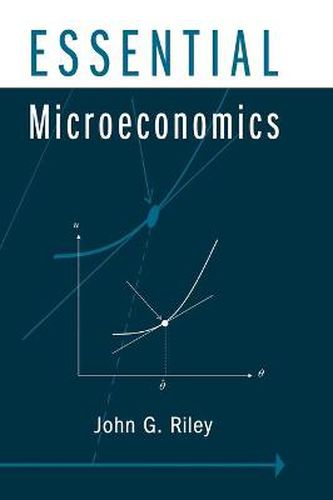Readings Newsletter
Become a Readings Member to make your shopping experience even easier.
Sign in or sign up for free!
You’re not far away from qualifying for FREE standard shipping within Australia
You’ve qualified for FREE standard shipping within Australia
The cart is loading…






Essential Microeconomics is designed to help students deepen their understanding of the core theory of microeconomics. Unlike other texts, this book focuses on the most important ideas and does not attempt to be encyclopedic. Two-thirds of the textbook focuses on price theory. As well as taking a new look at standard equilibrium theory, there is extensive examination of equilibrium under uncertainty, the capital asset pricing model, and arbitrage pricing theory. Choice over time is given extensive coverage and includes a basic introduction to control theory. The final third of the book, on game theory, provides a comprehensive introduction to models with asymmetric information. Topics such as auctions, signaling and mechanism design are made accessible to students who have a basic rather than a deep understanding of mathematics. Examples and diagrams are used to illustrate issues as well as formal derivations.
$9.00 standard shipping within Australia
FREE standard shipping within Australia for orders over $100.00
Express & International shipping calculated at checkout
Stock availability can be subject to change without notice. We recommend calling the shop or contacting our online team to check availability of low stock items. Please see our Shopping Online page for more details.
Essential Microeconomics is designed to help students deepen their understanding of the core theory of microeconomics. Unlike other texts, this book focuses on the most important ideas and does not attempt to be encyclopedic. Two-thirds of the textbook focuses on price theory. As well as taking a new look at standard equilibrium theory, there is extensive examination of equilibrium under uncertainty, the capital asset pricing model, and arbitrage pricing theory. Choice over time is given extensive coverage and includes a basic introduction to control theory. The final third of the book, on game theory, provides a comprehensive introduction to models with asymmetric information. Topics such as auctions, signaling and mechanism design are made accessible to students who have a basic rather than a deep understanding of mathematics. Examples and diagrams are used to illustrate issues as well as formal derivations.